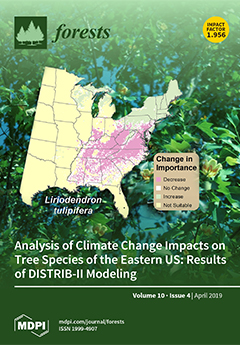Surviving relict populations of species that were more widespread in ancient times can teach us a lot, such as evolution and genetic differentiation. One such relict plant is
Liriodendron, of which populations remain in China (
L. chinense (Hemsl.) Sarg.) and the
[...] Read more.
Surviving relict populations of species that were more widespread in ancient times can teach us a lot, such as evolution and genetic differentiation. One such relict plant is
Liriodendron, of which populations remain in China (
L. chinense (Hemsl.) Sarg.) and the USA (
L. tulipifera L.). Studying the genetic structure of these populations would give insight into the genetic differentiation and the breeding strategy. In this work, we developed and characterized 29 novel simple sequence repeat (SSR) markers based on expressed sequence tags (ESTs) from hybrid
Liriodendron (Liriodendron chinense × tulipifera) callus. In total, 29 SSRs with perfect primer-designed were used to assess genetic diversity and differentiation. The set of polymorphic EST-SSR loci was identified in 48
Liriodendron individuals, represented by 35 individuals sampled from 14 provenances of
L. chinense and 13 individuals sampled from 5 provenances of
L. tulipifera. Our results indicated that
L. chinense populations possess slightly higher genetic diversity than
L. tulipifera populations. Based on genetic distances, 48
Liriodendron individuals clustered into three groups (the eastern China
L. chinense, the western China
L. chinense and
L. tulipifera), although the STRUCTURE analysis of the
Liriodendron populations revealed just two clear genetic clusters (
L. chinense and
L. tulipifera). Among these 29 novel markers, ESSR119 showed an obvious species-specific characteristic which can be very useful in marker-assisted selection (MAS). In general, all these EST-SSR markers may have agronomic potential and constitute a basis for future studies on the identification, innovation, and even preservation of
Liriodendron germplasms.
Full article





